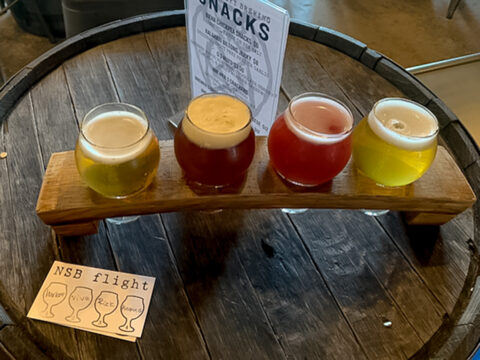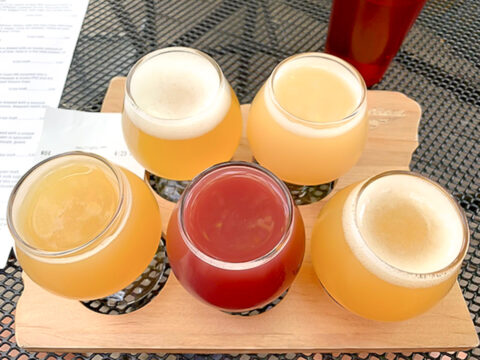
Hops have long been the star ingredient of craft beer. Descriptors like ‘piney’, ‘tropical’, ‘floral’ and ‘citrus’ are familiar to any beer enthusiast worth their salt. Less attention is paid, however, to the flavours that yeast can impart – think banana, fruity, smokey or cloves. So, to make a pitch as to the importance of your yeast selection in the overall flavour and mouthfeel of your beer, we’ve put together an article that takes a deep dive into the different yeast-specific flavour compounds and how you can tease these out in your next brew.
When discussing yeast-based flavours in brewing it’s handy to consider two main flavour groups: fruity esters and phenolic notes. As the name suggests, fruity esters can often be described as adding notes of apple, pear, banana or other fruits. Phenolic notes, on the other hand, can contribute clove-like, spicy, smoky or medicinal notes.
What are Esters?
Esters are organic compounds formed by the reaction of an acid (usually organic) and an alcohol. In brewing, the most important esters are those that contribute to the aroma and flavour of your beer. They can give beer fruity, floral, and sometimes even spicy notes. Examples of common esters in beer include isoamyl acetate (banana flavour), ethyl acetate (solvent-like, fruity), and ethyl hexanoate (apple flavour).
Origin of Esters in Beer
The primary source of esters in beer is yeast metabolism. During fermentation, yeast cells produce esters as by-products. The amount and type of esters produced can vary based on several factors:
Yeast Strain: Different strains of yeast have different propensities for ester production. For example, English ale yeasts are known for producing a more pronounced ester profile compared to most American ale yeasts.
Fermentation Temperature: Higher fermentation temperatures generally increase ester production, but this isn’t a hard and fast rule for all yeasts.
Wort Composition: A wort with a higher concentration of fermentable sugars can lead to increased ester production.
Oxygen Presence: Oxygen can decrease ester production because it promotes yeast growth over alcohol production. This is why it’s important to minimise oxygen exposure during fermentation.
Pitch Rate: Underpitching (using too few yeast cells) can result in higher ester production because the yeast undergoes more growth and produces more esters.
How to Use Esters in Your Brews
Just as esters play a significant role in the flavour profile of certain beers, so do phenolic compounds. Here’s an in-depth look:
What are Phenolic Compounds?
Phenolic compounds are a broad group of chemicals that contain a phenol ring. In the context of beer, when brewers refer to “phenolic” flavours or aromas, they’re typically referring to specific phenolic compounds that can impart particular flavours and aromas, ranging from clove-like to smoky or medicinal.
Origin of Phenolic Notes in Beer:
Yeast Metabolism: Certain yeast strains, especially many Belgian and wheat beer yeasts, naturally produce phenolic compounds during fermentation. The most commonly recognised is 4-vinyl guaiacol, which imparts a clove-like aroma and flavour.
Bacterial Contamination: Phenolic off-flavours can also arise from unwanted bacteria in the beer, resulting in smoky, plastic, or medicinal notes.
Malted Grains: The use of smoked malts, as in traditional Rauchbiers from Bamberg, Germany, imparts smoky phenolic notes. The malt is smoked over beechwood, giving the beer its characteristic flavour.
Chlorinated Water: If the brewing water contains chloramines or chlorine, it can react with phenols in the wort, leading to chlorophenolic off-flavours, which might taste or smell like plastic or medicinal band-aids.
In summary
Hopefully, this article has outlined some of the many contributions that yeast adds to the brewing process over and above simple fermentation. Understanding and identifying the different flavours that yeast provides to beer is a great way to increase your appreciation of different beer styles as well as improve your own brewing knowledge.
Happy experimenting!



